Loss of correlated proteasomal subunit expression selectively promotes the 20SHigh state which underlies luminal breast tumorigenicity
- PMID: 39814910
- PMCID: PMC11735796
- DOI: 10.1038/s42003-024-07432-7
Loss of correlated proteasomal subunit expression selectively promotes the 20SHigh state which underlies luminal breast tumorigenicity
Abstract
Why cancer cells disproportionately accumulate polyubiquitinated proteotoxic proteins despite high proteasomal activity is an outstanding question. While mis-regulated ubiquitination is a contributing factor, here we show that a structurally-perturbed and sub-optimally functioning proteasome is at the core of altered proteostasis in tumors. By integrating the gene coexpression signatures of proteasomal subunits in breast cancer (BrCa) patient tissues with the atomistic details of 26S holocomplex, we find that the transcriptional deregulation induced-stoichiometric imbalances perpetuate with disease severity. As seen in luminal BrCa cell lines, this imbalance limits the number of double-capped 19S-20S-19S holocomplexes (30S) formed and promotes free 20S catalytic core accumulation that is widely-believed to confer survival advantage to tumors. By retaining connectivity with key tumor 19S:20S interface nodes, the PSMD9 19S subunit chaperone emerges as a crucial regulator of 26S/30S:20S ratios sustaining tumor cell proteasome function. Disrupting this connectivity by depleting PSMD9 in MCF7 cells introduces structural anomalies in the proteasome, and shifts dependence from 20SHigh to a deregulated 26SHigh state invoking anti-tumor responses which opens up clinically-relevant therapeutic possibilities.
© 2025. The Author(s).
Conflict of interest statement
Competing interests: The authors declare no competing interests.
Figures
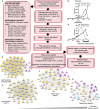




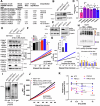
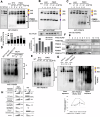
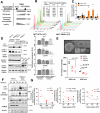
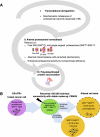
Similar articles
-
Method of Monitoring 26S Proteasome in Cells Revealed the Crucial Role of PSMA3 C-Terminus in 26S Integrity.Biomolecules. 2023 Jun 15;13(6):992. doi: 10.3390/biom13060992. Biomolecules. 2023. PMID: 37371572 Free PMC article.
-
Depleting the 19S proteasome regulatory PSMD1 subunit as a cancer therapy strategy.Cancer Med. 2023 May;12(9):10781-10790. doi: 10.1002/cam4.5775. Epub 2023 Mar 19. Cancer Med. 2023. PMID: 36934426 Free PMC article.
-
PSMD9 expression predicts radiotherapy response in breast cancer.Mol Cancer. 2014 Mar 28;13:73. doi: 10.1186/1476-4598-13-73. Mol Cancer. 2014. PMID: 24673853 Free PMC article.
-
Redox regulation of the proteasome via S-glutathionylation.Redox Biol. 2013 Dec 14;2:44-51. doi: 10.1016/j.redox.2013.12.003. Redox Biol. 2013. PMID: 24396728 Free PMC article. Review.
-
The 26S proteasome: a dynamic structure.Mol Biol Rep. 1997 Mar;24(1-2):83-8. doi: 10.1023/a:1006837600040. Mol Biol Rep. 1997. PMID: 9228286 Review.
References
MeSH terms
Substances
LinkOut - more resources
Full Text Sources
Medical
Research Materials
Miscellaneous

